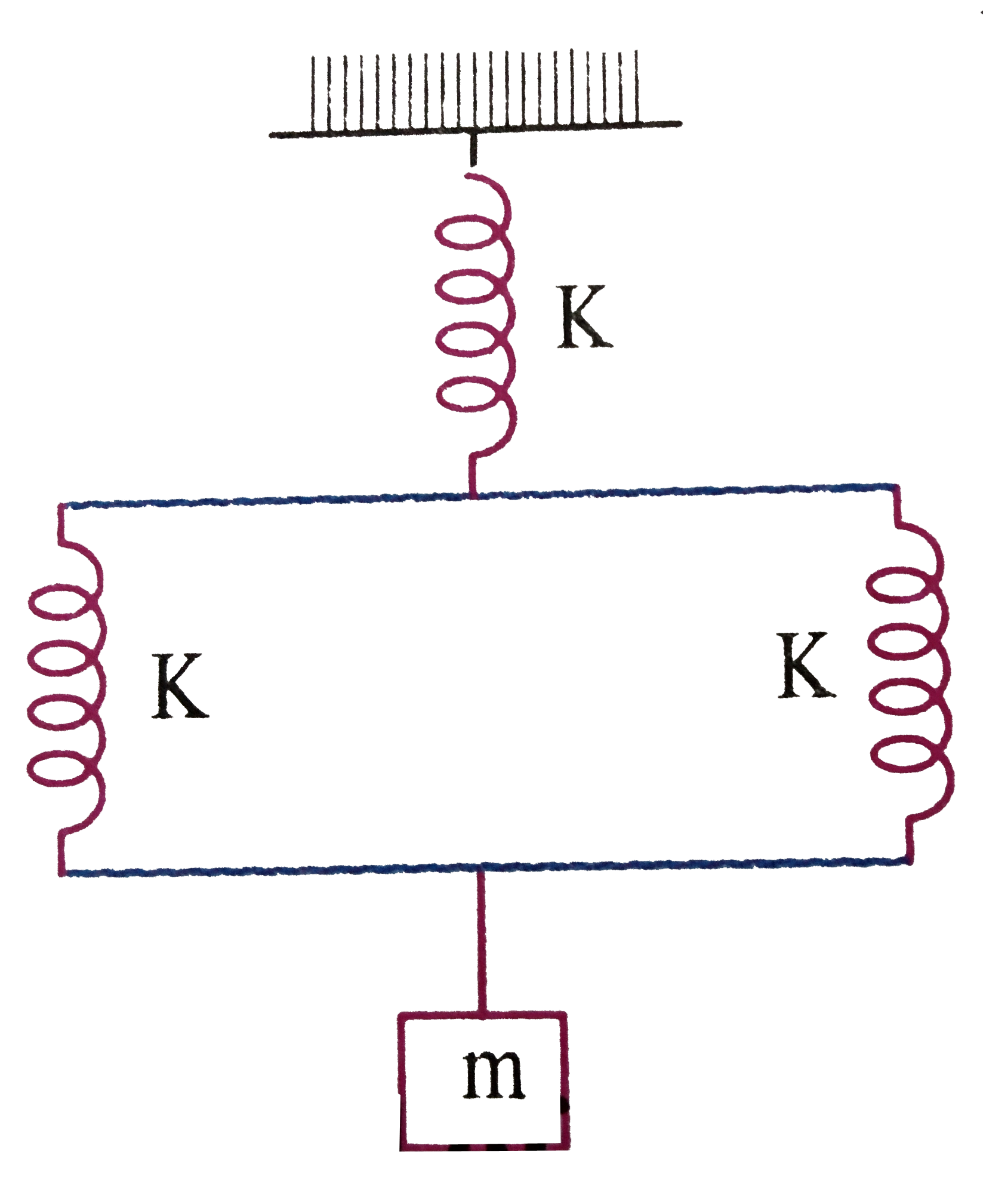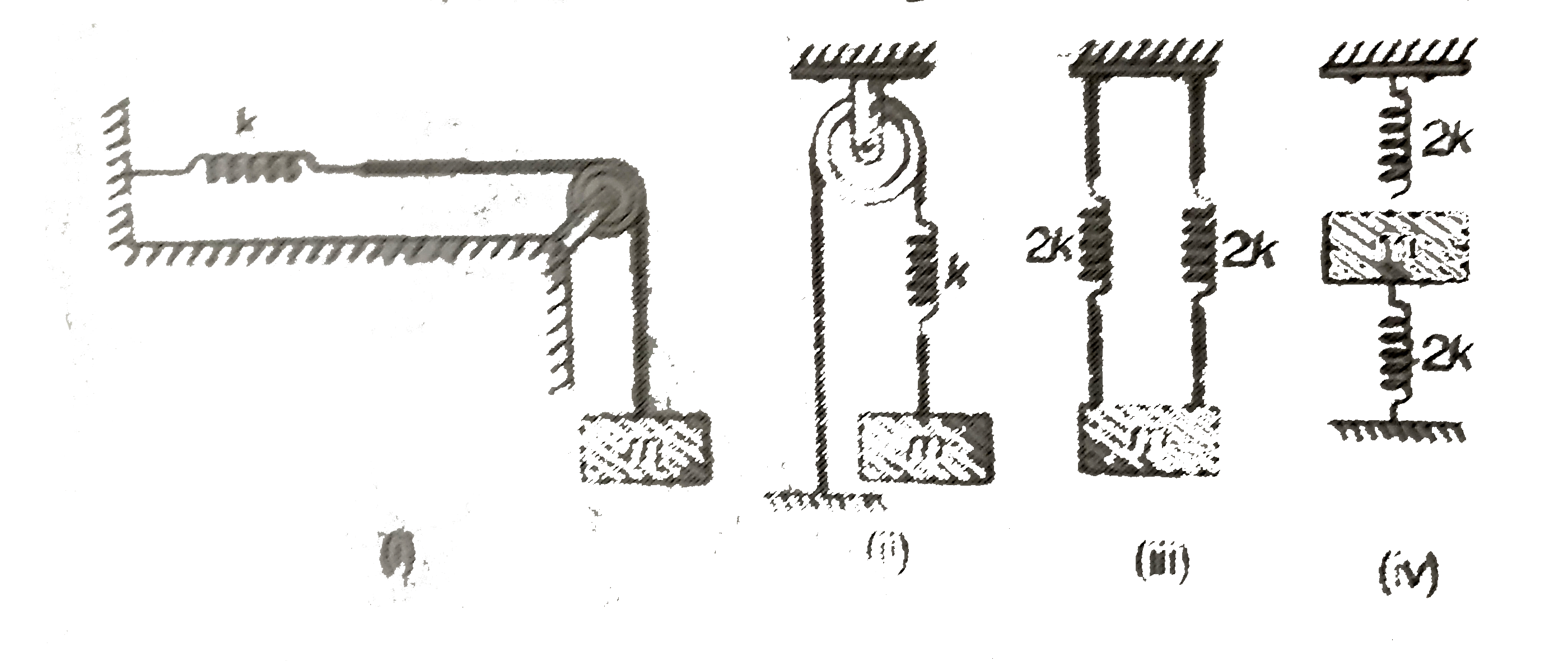A object of mass m is suspended from a spring and it executes SHM with frequency n. If the mass is increased 4 times , the new frequency will be
2 n
n/2
n
n/4
The correct Answer is:B
To solve the problem step by step, we will use the relationship between the frequency of simple harmonic motion (SHM) and the mass attached to the spring.
Step 1: Understand the formula for frequency in SHM
The frequency n of an object executing simple harmonic motion (SHM) when attached to a spring is given by the formula:
n=12π√km
where:
- n is the frequency,
- k is the spring constant,
- m is the mass attached to the spring.
Step 2: Identify the initial conditions
In the problem, we are given that the initial mass is m and the initial frequency is n. Therefore, we can write:
n=12π√km
Step 3: Determine the new mass
According to the problem, the mass is increased to 4 times its original value. Thus, the new mass m2 is:
m2=4m
Step 4: Write the formula for the new frequency
We need to find the new frequency n2 when the mass is m2. Using the same frequency formula, we have:
n2=12π√km2=12π√k4m
Step 5: Simplify the expression for the new frequency
Now, we can simplify the expression for n2:
n2=12π√k4m=12π⋅12√km=12(12π√km)
This shows that:
n2=n2
Step 6: Conclusion
Thus, the new frequency n2 when the mass is increased to four times its original value is:
n2=n2
Final Answer
The new frequency will be half of the original frequency n.
---
The frequency n of an object executing simple harmonic motion (SHM) when attached to a spring is given by the formula:
n=12π√km
where:
- n is the frequency,
- k is the spring constant,
- m is the mass attached to the spring.
In the problem, we are given that the initial mass is m and the initial frequency is n. Therefore, we can write:
n=12π√km
According to the problem, the mass is increased to 4 times its original value. Thus, the new mass m2 is:
m2=4m
We need to find the new frequency n2 when the mass is m2. Using the same frequency formula, we have:
n2=12π√km2=12π√k4m
Now, we can simplify the expression for n2:
n2=12π√k4m=12π⋅12√km=12(12π√km)
This shows that:
n2=n2
Thus, the new frequency n2 when the mass is increased to four times its original value is:
n2=n2
The new frequency will be half of the original frequency n.
Similar Questions
A mass is suspended from a vertica spring which is executing SHM of frequency 5 Hz.
The spring is unstretched at the highest point of oscillation. Maximum speed of the mass is (take, acceleration due to gravity, g=10m/s2 )
View SolutionA mass m is vertically suspended from a spring of negligible mass, the system oscillates with a frequency n. what will be the frequency of the system, if a mass 4m is suspended from the same spring?
View Solution
Knowledge Check
A spring has force constant K and a mass m is suspended from it. The spring is cut in half and the same is suspended from one of the havles. IF the frequency of osicllation in the frst case is α, then the frequency in the second case will be
A2 aBaCa/2Dα/√2
A spring mass system oscillates with a frequency v. If it is taken in an elavator slowly accelerating upward, the frequency will
View Solution
A block of mass m is suspended from a spring and executes vertical SHM of time period T as shown in Fig. The amplitude of the SHM is A and spring is never in compressed state during the oscillation. The magnitude of minimum force exerted by spring on the block is
View SolutionA block of mass m suspended from a spring of spring constant k. Find the amplitude of S.H.M.
View SolutionA weightless spring has a force constant k oscillates with frequency f when a mass m is suspended from it The spring is cut into three equal parts and a mass 3 m is suspended from it The frequency of oscillation of one part will now become
View SolutionA body of mass m is suspended from three springs as shown in figure. If mass m is displaced slightly then time period of oscillation is

View SolutionA block of mass m is suspended by different springs of force constant shown in figure.

View SolutionA particle executes SHM with frequency 4 Hz. Frequency with which its PE oscillates is
View Solution
